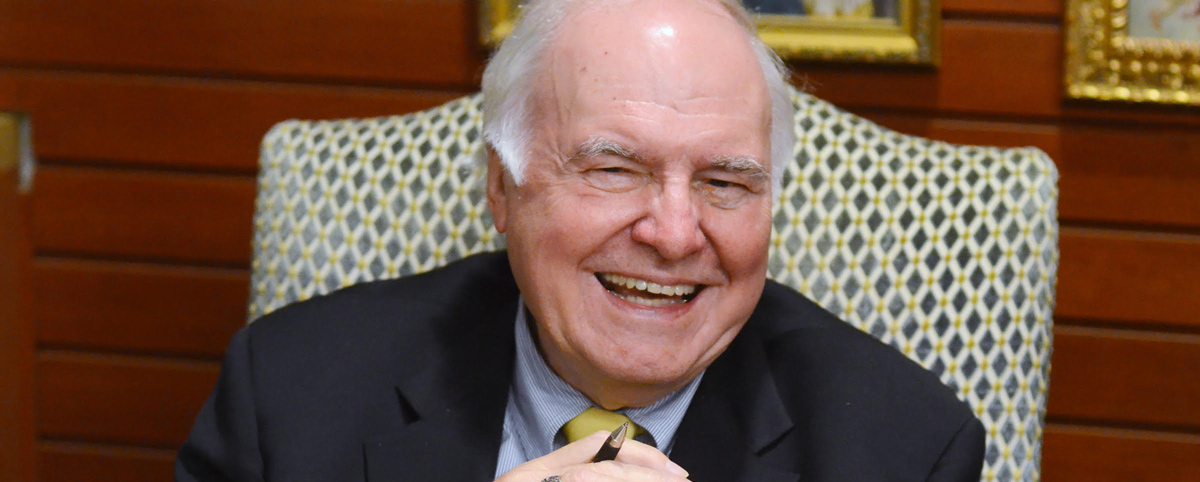The question of Catholicism’s consonance with liberalism is not new, as the Church first responded to the “social question” beginning in the late 19th century. It’s become timely again with the rise of Catholic postliberal movements. Michael Novak’s work on this subject, Freedom with Justice: Catholic Social Thought and Liberal Institutions, marks its 40th anniversary this year. Though less renowned than his The Spirit of Democratic Capitalism, Freedom with Justice is worth revisiting as a development of Novak’s reflections on economic freedom, political freedom, and moral ecology. Novak argues that Catholicism must more ardently affirm the liberal ideals and practices already deeply embedded in the faith. Particularly compelling is his argument for a liberal theory of the common good, a concept central to Catholic social thought (CST). But Novak’s work here is unlikely to persuade Catholics convinced of liberalism’s radical individualism and who seek a third way beyond liberalism and socialism.
As Novak reads history, Catholic social thought has “through trial and error” adopted “liberal” principles such as human dignity and rights, markets, the economic development of nations, religious liberty, and the vocation of persons to be co-creators with God. In his view, its task (in 1984) was to go beyond principles to more deeply “identify the institutions through which these ideals, common to Judaism, Christianity, and liberalism, become routinized … [among] sinful but aspiring humankind.” Foundational to this is biblical realism and integral humanism; Novak writes elsewhere that “from this enduring realism springs … ever-renewed vitality.” For Aquinas, whom Novak considers “a theologian of this world, an ‘integral humanist,’ a ‘biblical realist,’” Christian faith builds upon the moral achievements of finite being. Such a vision affirms the liberal value of wealth creation even for religious persons who recognize that their final calling is not of this world.
The Catholic critique of liberalism has generally been that the social philosophy devalued religious authority and tradition in favor of individual conscience, with a heightened individualism that abolished the family as the central social unit. Yet Novak takes issue with this. He faults certain papal figures for their limited engagement with the liberal canon, particularly the works of Adam Smith and John Stuart Mill, finding that this “misses entirely the genius of liberal institutions.” In Novak’s view, Paul VI’s critique of “profit, competition, and property as an absolute right” fails to account for the positive contributions of liberalism and its improvement over historical alternatives, instead interpreting liberalism as “solely a radical individualism, materialism and Darwinian struggle.”
Although similarly critical of Leo XIII and Pius XI for their skeptical posture toward liberalism (though both affirmed private property rights), Novak effuses about John XXIII: to enter John’s world is “for persons educated by liberal institutions a tremendous joy.” In Novak’s reading, John affirms private property and free association, but tempers this with a philosophical anthropology that “subsumed” “the cardinal tenet of liberalism … within a social and transcendent framework.” As Novak writes, this is a high achievement, and I find it consonant with the work of Wilhelm Röpke, curiously absent from Novak’s analysis.
In Freedom with Justice, Novak draws our attention to two German Catholic theologians, Wilhelm von Ketteler and Heinrich Pesch. Like Leo XIII in Rerum Novarum and Pius XI in Quadragesimo Anno, both sought a “middle way” between liberal individualism and socialist collectivism through a notion of organic unities or solidarism. But Novak is insistent: no third way is viable. Echoing his critique of papal figures, Novak chides these theologians for underestimating liberalism’s power.
In Novak’s view, von Ketteler failed to realize that some liberals had already sought to check the excesses of an unfettered laissez faire economic system through political and moral institutions. Novak also notes that Pesch’s solidarism is a kind of liberalism itself, particularly the voluntary associations already supported by liberalism, only “transformed by the larger sense of community, spiritual value, and common purpose Pesch wishes to bring to them.” Seemingly drawing on classical liberals F.A. Hayek and Frédéric Bastiat on spontaneous order and natural organization and Alexis de Tocqueville on civil society, Novak compellingly argues that liberalism has its own vision of the common good, though its method for discerning and striving toward it contrasts with a top-down or solidarist approach.
Novak particularly shines in the distinction he draws between the ethos of Anglo-American liberalism and continental liberalism. He finds that Anglo-American life under liberalism indeed has “powerful social vitalities” that drive toward the common good. This undergirds his negative critique of “organic and corporative models” such as von Ketteler’s and Pesch’s, finding that their project merely allows “the most powerful groups simply to enforce their own vision of the common good.” Novak thus has faith in a liberal notion of the common good, rendering his approach similar to the work of Joseph Raz and conducive to a dialogue with Catholic social teaching.
Novak also finds a meeting ground between liberalism and Catholic social teaching in his distinctive reading of classical liberals on property and the common good. As he inquires, “Did not John Locke, Adam Smith, and John Stuart Mill—and a host of other liberal thinkers—justify private property through its service to the common good, and, therefore, as a relative right?” Such a reading resonates with the Catholic principle of the universal destination of goods, usually seen as tempering property rights. But Novak seems to stand alone here; most would read these liberal figures, especially Locke, as stronger on private property rights than Catholic thought would allow.
While Novak insists that the liberal society best serves Catholic social thought in that it “best uplifts the poor, institutionalizes the dignity of the human person … and conspires to establish a more voluntary and open communitarian form of life,” many ask whether CST has something to offer liberalism. Novak hints at a reply when he contends that Catholic social thought “ought to demand still more from the United States … ‘liberty and justice for all.’” And the Church’s mission must include reflection on “its own role in generating an ethos … favorable to economic progress.” Reading Novak, Christian faith enables a moral ecology that goes beyond Hayekian negative liberty toward a freedom that “depends for its fruition upon moral clarity, courage, and restraint.” In turn, that moral ecology nourishes and sustains liberal institutions.
Freedom with Justice received mixed reviews upon its publication in 1984, though most reviewers commended Novak’s achievement in seeking to reconcile schools of thought. Joseph Sobran noted Novak’s distinction between capitalism in theory and in practice; capitalism “has generated humane institutions,” while socialism “sounds humane in theory but has produced incalculable suffering.” Meanwhile, William French faults Novak for disregarding “the importance of a theory of Latin American poverty” in his extensive critique of liberation theology, a subject Novak also discusses at length in Spirit, reading the signs of his times.
Some reviewers noted Novak’s “capitalistic bias” (James Conlin) and “polemical defense of contemporary American capitalism” (James Kelly), while John Pawlikowski finds that Novak glosses over “the theological and biblical foundations for economic justice” in his defense of liberal political economy. Nonetheless, reviewers like Conlin, John Langan, and Paul Weber believe Novak constructively advances the conversation between Catholic social thought and Anglo-American liberalism. On its 40th anniversary of publication, amid debates about Catholicism and liberalism that often fail to account for the complexity of both, Novak’s Freedom with Justice continues to challenge and inspire.
(Photo: Catholic University of America)

